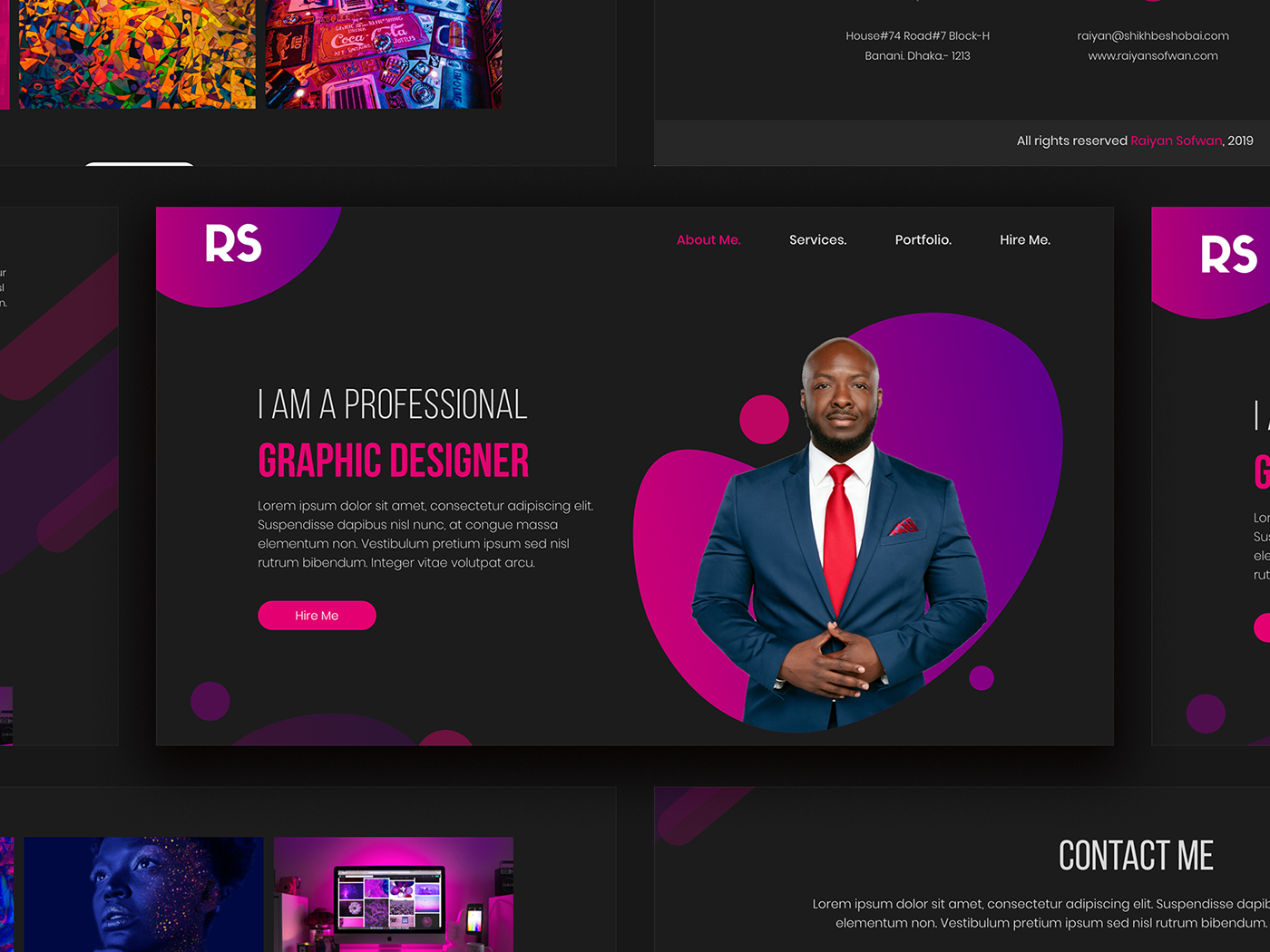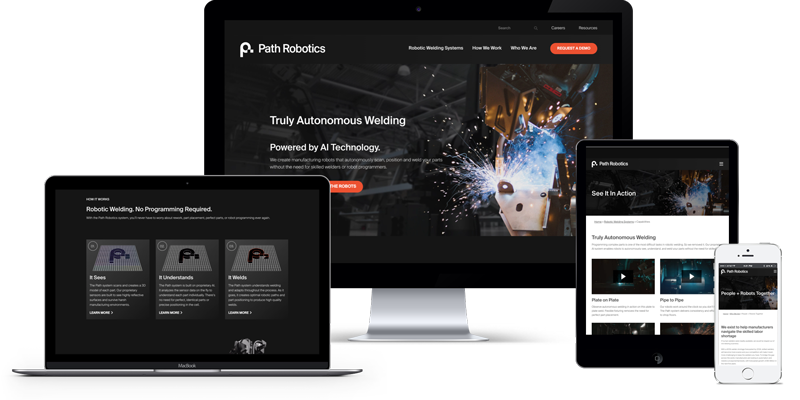Trick Methods for Carrying Out User-Centric Site Layout to Boost Involvement
When thinking about the application of user-centric site design, particular approaches are critical in improving interaction. Extensive research into customer requirements and preferences creates the foundation, guiding the production of customer identities to inform design choices. Individualizing web content boosts user satisfaction, and durable availability features broaden reach.
Understanding Customer Needs
Understanding customer needs is a basic step in the process of user-centric website layout. This method ensures that the web site aligns with the assumptions and requirements of its target market, ultimately bring about enhanced individual satisfaction and involvement. The initial stage entails carrying out comprehensive study to gather insights right into user habits, choices, and pain points. Strategies such as studies, meetings, and user screening can offer valuable qualitative and quantitative information regarding exactly how customers communicate with the web site.
Evaluating this information enables developers to develop thorough customer personalities that represent the various segments of the target audience. These personalities assist notify layout choices by highlighting details customer objectives and obstacles, leading the growth of attributes that resolve these demands effectively. Furthermore, comprehending the context in which individuals operate-- such as their atmosphere, device preferences, and time constraints-- can further refine the design method.
Empathy plays a vital duty in this procedure, allowing designers to see the website from the user's viewpoint. By focusing on user demands, the style process becomes extra focused, avoiding the inclusion of unneeded aspects that could mess the individual experience. Ultimately, a deep understanding of individual needs contributes in crafting an internet site that is both meaningful and practical.
Designing Instinctive Navigation
Having actually established a comprehensive understanding of customer needs, the following step in user-centric site design entails producing intuitive navigating. Effective navigating is fundamental to individual complete satisfaction, affecting how quickly users can discover details and complete jobs. To attain user-friendly navigating, designers need to focus on simplicity and quality, making certain that the navigation structure is sensible and constant throughout the website.
Organizing content into a clear power structure is crucial. Website Design. Using familiar labels and icons can guide individuals easily, reducing cognitive lots and enhancing the general customer experience. A well-designed navigating bar ought to be plainly positioned, enabling customers to recognize their current place and conveniently explore other sections of the site
It is additionally vital to incorporate interactive aspects such as breadcrumbs and search capabilities to assist users in navigating facility websites. These attributes provide extra pathways and enhance the availability of material, accommodating numerous customer choices and behaviors.
Examining navigating with actual users is important to determine prospective discomfort points and ensure performance lines up with user expectations. Normal comments loops and iterative improvements can assist preserve an effective navigating system that adapts to advancing customer requirements, eventually increasing interaction and satisfaction.
Creating Receptive Interfaces
Invariably, producing responsive user interfaces is a pivotal facet of contemporary website design, making sure that web sites are useful and available throughout a wide range of tools and screen dimensions (Website Design). This adaptability is vital in a landscape where individuals accessibility content by means of smartphones, laptop computers, tablets, and desktop computers, each with varying alignments and resolutions. The primary goal of receptive layout is to enhance individual experience by preserving optimum readability and use, despite the gadget made use of
To achieve this, web developers use flexible grid layouts, fluid photos, and CSS media questions. Flexible grids permit internet site components to resize proportionally, while liquid photos guarantee visuals scale properly without shedding top quality. Media questions play a vital role by applying different styles based on the device's qualities, such as height, width, and orientation, thus tailoring the format to the user's display.
In addition, receptive user interfaces add to boosted seo (SEARCH ENGINE OPTIMIZATION) by providing a seamless user experience, which in turn can lower bounce prices and boost site engagement. In recap, embracing responsive design is not merely a technological factor to consider however a necessary technique for promoting a user-centric internet environment that meets the needs of a varied audience.

Personalizing Content Experience
Personalizing content experience is a crucial component of user-centric website design that entails customizing web content to satisfy the distinct preferences and behaviors of specific customers. This technique not only enhances customer contentment yet likewise fosters much deeper involvement, as site visitors are much more likely to connect with web content that resonates with their passions and demands. By leveraging data analytics and user responses, organizations can determine patterns and trends that educate the modification of web material.
Including personalization strategies can vary from basic adjustments, such as advising products based upon searching background, to a lot more sophisticated methods like dynamic web content that adjusts in real-time to a user's communications. As an example, individualized landing web pages can substantially increase conversion prices by providing customers with relevant details and my company uses that align with their previous tasks and preferences.
Additionally, making use of synthetic knowledge and machine knowing can better refine content customization by continually gaining from user actions and adjusting to emerging patterns. This not just boosts the user's journey however likewise constructs brand name loyalty, as customers feel comprehended and valued. Inevitably, personalizing the content experience is a necessary strategy for businesses aiming to produce a much more purposeful and interesting communication with their target market.
Enhancing Access Attributes
Enhancing accessibility functions is an essential aspect of user-centric website design, guaranteeing that digital content is usable by everyone, including individuals with disabilities. This approach not only complies with lawful criteria such as the Americans with Disabilities Act (ADA) and the Internet Material Availability Guidelines (WCAG) but also significantly broadens a website's target market reach. By incorporating functions like keyboard navigating, display visitor compatibility, and alternative message for photos, web sites end up being a lot more inclusive, providing a smooth experience for customers with visual, auditory, or electric motor disabilities.
Incorporating responsive layout aspects is important, helping with access on numerous gadgets and screen dimensions, thus suiting individuals with different choices and needs. Comparison ratios and text size adjustments can boost readability for individuals with visual difficulties. Providing clear and succinct material structure, such as lists and headings, help understanding and navigation, particularly for individuals with cognitive disabilities.
Routine accessibility audits ought to be useful reference conducted to identify and fix potential obstacles, guaranteeing continued compliance and use. By prioritizing accessibility, organizations not only foster check over here inclusivity however additionally improve overall user engagement and satisfaction, inevitably driving greater conversion prices and strengthening brand commitment.

Final Thought
Incorporating user-centric design methods significantly enhances site interaction by prioritizing the requirements and choices of individuals. Detailed study promotes the production of user personalities, directing targeted style decisions.
Extensive research study right into individual requirements and preferences forms the foundation, guiding the creation of user characters to educate layout selections. Methods such as surveys, interviews, and user testing can provide valuable qualitative and measurable information regarding exactly how users interact with the internet site.
By focusing on individual requirements, the design procedure ends up being much more focused, preventing the incorporation of unneeded elements that could mess the individual experience. Effective navigating is essential to user contentment, affecting exactly how easily customers can discover information and full tasks. The use of acquainted labels and symbols can assist users easily, lowering cognitive tons and enhancing the total user experience.